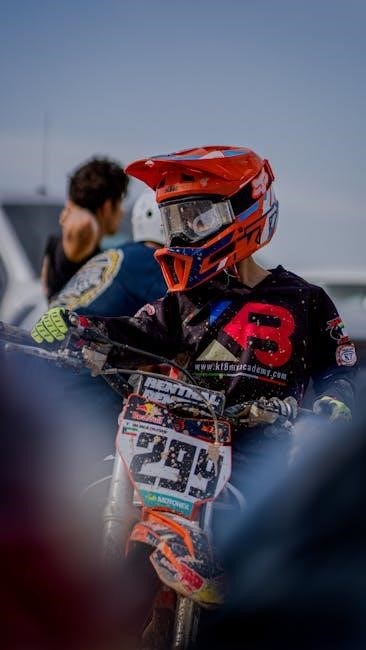Motorcycle racing suits are a crucial piece of safety gear designed to protect riders during high-speed racing or track days․ These suits‚ typically made of leather‚ provide abrasion resistance and impact protection in the event of a crash․ A properly fitted racing suit acts as a second skin‚ offering crucial protection․ They are designed to be comfortable in the riding position‚ allowing for free movements․ Finding the perfect-fitting motorcycle racing suit is crucial for safety and comfort․ This guide provides a step-by-step process from understanding suit types (one-piece vs․ two-piece) to mastering accurate body measurements and navigating manufacturer size charts․
Motorcycle suits come in various styles and materials‚ each offering different levels of protection and comfort․ Whether you’re a seasoned racer or a track day enthusiast‚ understanding the purpose and features of a motorcycle racing suit is essential for making an informed decision․ Choosing the right size is paramount‚ as it directly impacts both safety and performance․ A well-fitted suit allows for unrestricted movement while providing maximum protection․
Racing suits are designed for the demands of high-speed motorcycle racing on the track and the custom-size motorbike suit archives give the best fitting as they’re made as per the riders body measurements for sports racing․ All the professional riders wear custom-size suits․
Importance of Proper Fit for Safety and Comfort
A properly fitted motorcycle racing suit is essential for both safety and comfort on the track․ Safety First: A properly fitted racing suit acts as a second skin‚ providing crucial protection in the event of a crash or slide․ Ill-fitting suits can bunch up‚ restrict movement‚ or fail to provide adequate protection in key areas․ A suit that is too loose may not stay in place during a crash‚ leaving you vulnerable to injuries․ Conversely‚ a suit that is too tight can restrict your movement‚ leading to fatigue and potentially affecting your ability to control your motorcycle effectively․ A perfect motorcycle suit is a little sung and fits exactly at your shoulders‚ chest‚ inseam‚ and body for free movements; As per the recommendation‚ the custom-size motorbike suit archives give the best fitting as they’re made as per the riders body measurements for sports racing and its different challenges․ All the professional riders wear custom-size suits․
Comfort is also a critical factor․ A well-fitted suit allows for a full range of motion‚ enabling you to maintain the correct riding position and react quickly to changing conditions․ If the suit restricts your breathing (even in a standing position)‚ however it should feel tight around the chest․ A little bunching up around the waist while in a tuck is Okay․ A suit that is too tight can cause discomfort and fatigue‚ while a suit that is too loose can be distracting and make it difficult to feel the motorcycle properly․
Remember‚ suits are designed to be comfortable in the riding position‚ not in a standing position․ A good fitting suit shouldn’t restrict your breathing (even in a standing position)‚ however it should feel tight around the chest․ A little bunching up around the waist while in a tuck is Okay․
Types of Motorcycle Racing Suits: One-Piece vs․ Two-Piece
Motorcycle racing suits primarily come in two styles: one-piece and two-piece․ Each type offers distinct advantages and is suited for different riding conditions and preferences․
One-Piece Suits: One-piece suits are the standard for professional track racing and are often preferred by serious enthusiasts․ They offer superior protection because there are no connecting zippers or seams that could potentially separate during a crash․ A one-piece suit provides a more secure and streamlined fit‚ minimizing the risk of snagging or catching on the track surface․ A one-piece suit should be uncomfortable to stand up straight in‚ the leather around the waist should be taught and conforming; it should feel better when you’re in a tuck․ The 1-piece suit is going to get you into more track days than a 2-piece․ They are designed to be comfortable in the riding position‚ not in a standing position; A good fitting suit shouldn’t restrict your breathing (even in a standing position)‚ however it should feel tight around the chest․ A little bunching up around the waist while in a tuck is Okay․
Two-Piece Suits: Two-piece suits consist of a jacket and pants that zip together․ They offer greater versatility and convenience compared to one-piece suits․ Two-piece suits are easier to put on and take off‚ making them more practical for street riding and touring where you may need to remove the jacket separately․ They provide greater flexibility in regards to sizing․ They can also be more comfortable for riders who are not spending extended periods in a full racing crouch․ While two-piece suits offer good protection‚ they may not provide the same level of security as one-piece suits in a high-speed crash‚ as there is a possibility of the jacket and pants separating․
The choice between a one-piece and two-piece suit depends on your riding style‚ priorities‚ and the level of protection you require․ One-piece suits are the best for most extreme track racing‚ while two-piece suits are suitable for sports road riding․
Taking Accurate Body Measurements
Accurate body measurements are crucial for selecting a motorcycle racing suit that fits properly and provides the necessary protection and comfort․ Follow these steps to ensure you obtain the most precise measurements:
Preparation: Use a flexible measuring tape‚ preferably cloth or vinyl․ Wear the type of undergarments and protective gear (like a back protector) you plan to wear under the suit․ Stand in a relaxed‚ upright posture with your feet shoulder-width apart․ Have someone assist you with the measurements for greater accuracy․
Essential Measurements:
- Chest: Measure around the fullest part of your chest‚ under your armpits‚ keeping the tape level and snug but not too tight․
- Waist: Measure around your natural waistline‚ which is typically the narrowest part of your torso‚ inline with the navel․ Keep the tape horizontal and snug․
- Hips: Measure around the fullest part of your hips‚ keeping the tape level․
- Inseam: Measure from the top of your inner thigh (near the crotch) to the bottom of your ankle bone․ It’s best to have someone assist you with this measurement while you stand with your legs slightly apart․
- Sleeve Length: Measure from the back of your neck at the center to your wrist; arm bent 90 degree angle at the elbow․
- Height: Stand against a wall with your shoes off and measure from the top of your head to the floor․
- Neck: Measure the circumference of your neck․
- Shoulder to Shoulder: Shirt shoulder seam to shirt shoulder seam․
Tips for Accuracy: Take each measurement two or three times to ensure consistency․ Record all measurements in both inches and centimeters․ Be honest with your measurements; do not try to overestimate or underestimate․ If you are between sizes‚ it is generally recommended to choose the larger size․
By taking accurate body measurements‚ you can confidently navigate manufacturer size charts and select a racing suit that provides a snug‚ comfortable‚ and protective fit․
Understanding Manufacturer Size Charts
Once you have your body measurements‚ the next crucial step is understanding and interpreting manufacturer size charts․ These charts are essential for translating your measurements into the appropriate suit size․ However‚ it’s important to recognize that sizing can vary significantly between brands‚ and even between different models within the same brand․ Therefore‚ it’s vital to consult the specific size chart provided by the manufacturer of the suit you are interested in․
Key Elements of a Size Chart:
- Measurements: Size charts typically list body measurements such as chest‚ waist‚ hips‚ inseam‚ sleeve length‚ and height․ These measurements are usually provided in both inches and centimeters;
- Sizes: The chart will correlate these measurements to specific suit sizes‚ often indicated by numerical values (e․g․‚ 48‚ 50‚ 52) or letter sizes (e․g․‚ S‚ M‚ L‚ XL)․ European sizes (EU) are commonly used for racing suits․
- Fit Notes: Some manufacturers provide additional fit notes or guidelines‚ such as whether the suit is designed for a slim fit‚ a regular fit‚ or a more relaxed fit․
Using the Size Chart Effectively:
- Locate the Correct Chart: Always use the size chart specific to the manufacturer and model of the suit you are considering․ Do not assume that your size from one brand will be the same in another․
- Compare Your Measurements: Carefully compare your body measurements to the measurements listed on the size chart․ Identify the size that best matches your overall measurements․
- Prioritize Key Measurements: Chest and height are often the most critical measurements for determining the correct suit size․ If you fall between sizes‚ prioritize the chest measurement․
- Consider Fit Preferences: If you prefer a tighter fit‚ you may opt for a size smaller․ If you prefer a more relaxed fit‚ you may choose a size larger․ However‚ remember that a racing suit should fit snugly to provide optimal protection․
- Read Reviews and Seek Advice: Check online reviews or forums to see if other riders have commented on the sizing of the particular suit you are interested in․ You can also consult with experienced track riders or racing gear retailers for advice․
By carefully analyzing manufacturer size charts and considering your individual body measurements and fit preferences‚ you can significantly increase your chances of selecting a racing suit that fits well and meets your specific needs․
Trying on a Racing Suit: The Riding Position Test
Trying on a motorcycle racing suit is a crucial step in ensuring a proper fit that balances safety‚ comfort‚ and performance․ Unlike regular clothing‚ a racing suit is designed to function optimally when you’re in a riding position․ Therefore‚ it’s essential to perform the “riding position test” during the try-on process․
The Importance of the Riding Position Test:
A racing suit may feel awkward or restrictive when you’re standing upright․ This is because the suit is tailored to accommodate the hunched-over posture and specific movements required for riding a motorcycle at high speeds․ The riding position test allows you to simulate these conditions and assess whether the suit provides adequate freedom of movement and protection in the areas that matter most․
How to Perform the Riding Position Test:
- Wear Appropriate Undergarments: When trying on a racing suit‚ wear the same type of base layer or undergarments that you would typically wear while riding․ This will ensure that the fit is accurate under realistic conditions․
- Assume the Riding Position: Mimic the posture you would adopt while riding your motorcycle on the track․ This includes leaning forward‚ tucking your elbows in‚ and positioning your hands as if you were gripping the handlebars․
- Check for Restrictions: While in the riding position‚ pay close attention to any areas where the suit feels overly tight or restrictive․ Common areas of concern include the chest‚ shoulders‚ arms‚ groin‚ and knees․
- Assess Range of Motion: Perform a series of movements that you would typically make while riding‚ such as reaching for the controls‚ turning your head to check your surroundings‚ and shifting your weight from side to side․ Ensure that the suit allows you to move freely without significant limitations․
- Evaluate Comfort: Consider the overall comfort of the suit while in the riding position․ A well-fitting suit should feel snug but not constricting․ It should allow you to breathe easily and maintain a comfortable posture for extended periods․
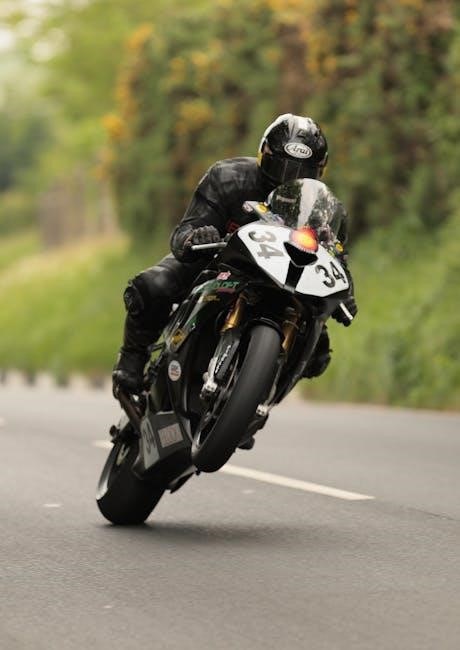
Key Considerations During the Test:
- Back Protector: If you plan to wear a back protector with your racing suit‚ be sure to try on the suit with the protector in place․ This will ensure that the suit has enough room to accommodate the added bulk․
- Flexibility: Leather suits will typically stretch and conform to your body over time‚ especially in areas with accordion stretch panels․ However‚ the suit should still provide adequate flexibility from the outset․
- Professional Advice: If you’re unsure about the fit of a racing suit‚ seek advice from experienced track riders or racing gear retailers․ They can provide valuable insights and help you identify any potential issues․
By performing the riding position test carefully and thoroughly‚ you can ensure that your racing suit fits properly and provides the comfort‚ protection‚ and freedom of movement you need to perform at your best on the track․
Fit Considerations: Chest‚ Waist‚ and Leg Length
Achieving the right fit for a motorcycle racing suit involves paying close attention to several key areas: the chest‚ waist‚ and leg length․ These dimensions play a critical role in ensuring both comfort and safety while riding․ A suit that fits properly in these areas will allow for optimal movement and protection on the track․
Chest:
The chest measurement is one of the most important factors in determining the overall size of a racing suit․ A suit that is too tight in the chest can restrict breathing and limit upper body movement‚ while a suit that is too loose can compromise protection in the event of a crash․
- Snug Fit: The suit should fit snugly across the chest without feeling constricting․ You should be able to breathe comfortably and move your arms freely without excessive restriction․
- Back Protector Compatibility: If you plan to wear a back protector‚ make sure to try on the suit with the protector in place․ The chest area should have enough room to accommodate the added bulk without feeling too tight․
- Armhole Placement: Pay attention to the placement of the armholes․ They should be positioned in a way that allows for a full range of motion without causing chafing or discomfort․
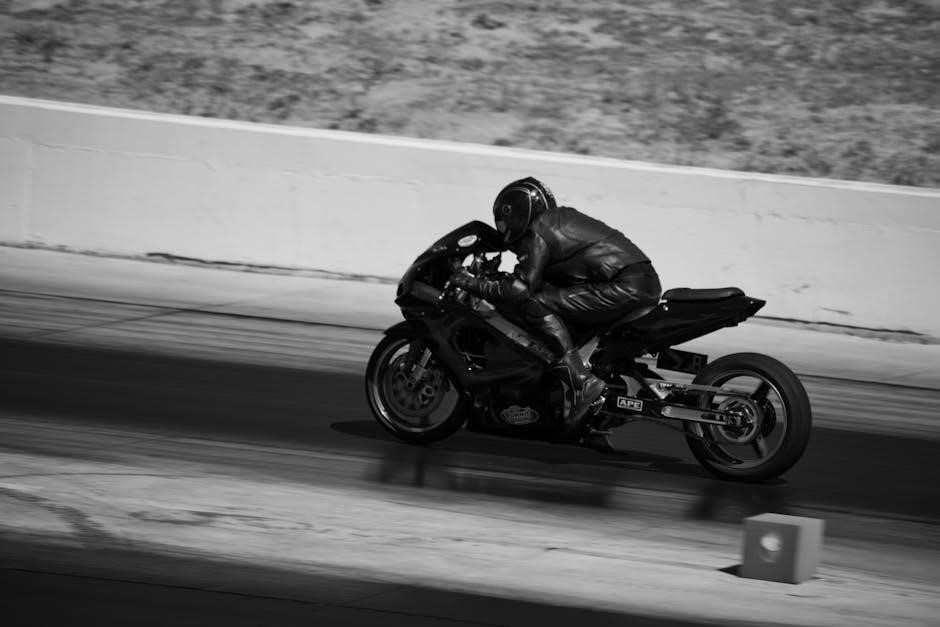
Waist:
The waist measurement is crucial for ensuring a secure and comfortable fit around the midsection․ A suit that is too tight in the waist can restrict movement and cause discomfort‚ while a suit that is too loose can allow the suit to shift during riding․
- Contoured Fit: The suit should fit closely around the waist‚ providing a contoured fit that supports the core without feeling overly tight․
- Waist Adjustments: Some racing suits feature adjustable waist closures or elastic panels that allow you to fine-tune the fit․
- Riding Position: Consider how the suit feels around the waist when you are in the riding position․ It should not bunch up or feel uncomfortable․ A little bunching up around the waist while in a tuck is Okay․
Leg Length:
The leg length is essential for ensuring that the suit provides adequate coverage and protection for your legs․ A suit that is too short in the legs can leave your ankles exposed‚ while a suit that is too long can bunch up and interfere with your riding․
- Proper Coverage: The legs of the suit should extend down to your ankles‚ providing full coverage when you are standing or sitting on the motorcycle․
- Knee Protection: Ensure that the knee protectors are properly positioned over your knees when you are in the riding position․ The protectors should not shift or move around during riding․
- Boot Interface: The legs of the suit should fit comfortably inside your motorcycle boots․
By carefully considering the fit in the chest‚ waist‚ and leg length‚ you can select a racing suit that provides the optimal balance of comfort‚ protection‚ and performance․ Remember to try on the suit in the riding position and pay attention to any areas where the fit feels less than ideal․
Adjustments and Custom Sizing Options
Brand Variations and Fit Differences
When selecting a motorcycle racing suit‚ it’s crucial to acknowledge that significant variations exist between brands and even within different models from the same brand․ These differences can stem from various factors‚ including design philosophies‚ target rider profiles‚ and manufacturing processes․
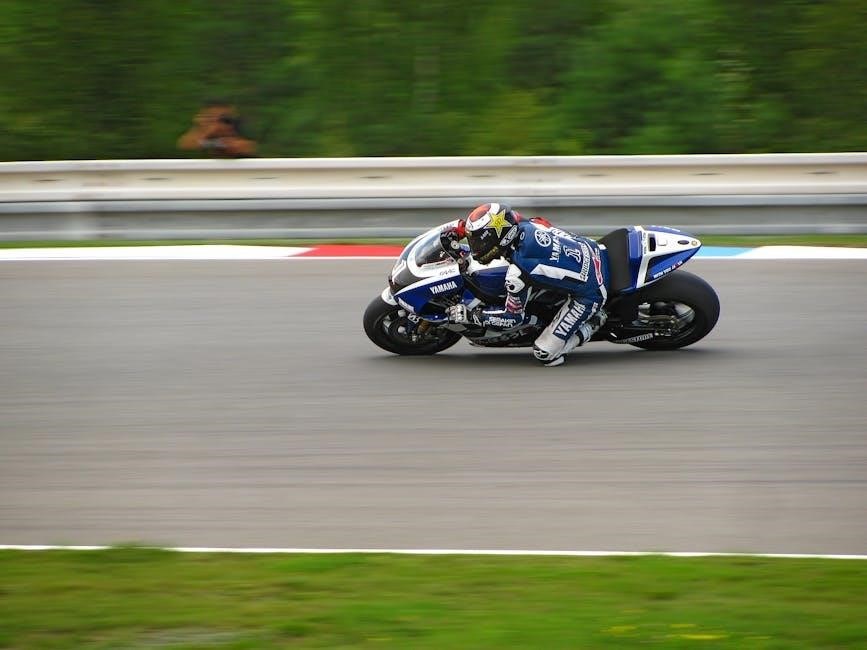
Sizing Discrepancies:
One of the most common challenges riders face is inconsistent sizing across brands․ A size 42 in one brand might fit completely differently than a size 42 in another․ This is due to variations in how manufacturers interpret standard measurements and how they tailor their suits․ For example‚ an EU 52 Dainese Laguna Seca 5 might not fit the same as an EU 50 Dainese Imola․ Therefore‚ relying solely on size numbers can be misleading․
Cut and Design:
Each brand has its unique cut and design‚ which can impact how the suit fits different body types․ Some brands might cater to a slimmer‚ more athletic build‚ while others might offer a more generous fit; The placement and type of stretch panels also play a crucial role in overall comfort and mobility․ Leather suits aren’t all made the same․ They have different cuts and stretch panels‚ so don’t strictly abide by a specific sizing․
Material and Construction:
The materials used and the construction techniques employed can also influence the fit and feel of a racing suit․ Some brands use thicker‚ stiffer leather‚ while others opt for more flexible and lightweight materials․ The way the panels are stitched together and the placement of armor can also affect how the suit conforms to the body․
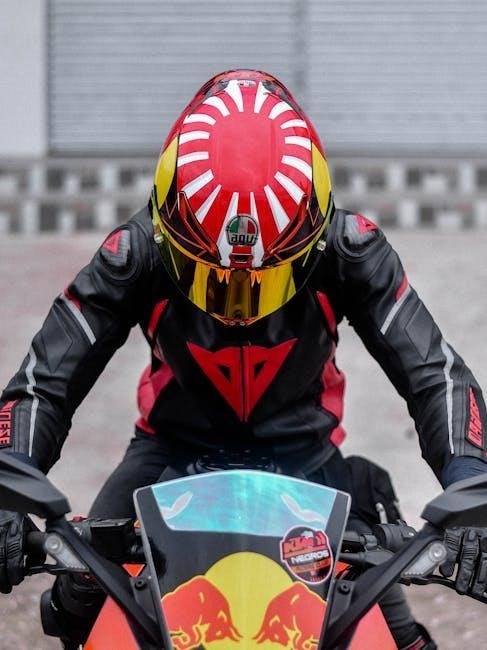
Country of Origin:
The country where a suit is manufactured can sometimes influence its fit․ For instance‚ some riders have noted differences in fit between Alpinestars suits made in Italy versus those made in Pakistan; The Italian-made suits may have a more precise and tailored fit compared to their counterparts․ Like Alpinestars‚ their Pakistani made cheaper suits do not fit the same as their Italian made Race Rep; even in the same sizing․
Model-Specific Variations:
Even within the same brand‚ different models can have distinct fit characteristics․ A racing suit designed for track use might have a more aggressive‚ pre-curved fit compared to a suit intended for sport touring․ Always try on different models from the same brand to find the one that best suits your body shape and riding style․ Shouldnt be able to move any of ․․․ the suit and that fitment between brands and even models of the same brand will all fit different even if they say they are the same size․
Recommendations:
- Try Before You Buy: Whenever possible‚ try on different brands and models of racing suits to assess their fit and feel․
- Consult Size Charts: Refer to the manufacturer’s size chart‚ but don’t rely on it exclusively․ Use it as a starting point and be prepared to adjust the size based on your individual measurements․
- Seek Expert Advice: Consult with experienced riders or sales professionals who can provide guidance on brand-specific fit characteristics․
